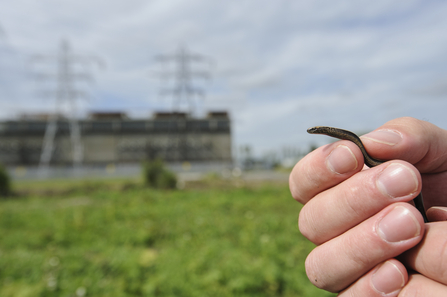
Juvenile slow worm. Picture: Terry Whittaker
Blackberries ripening in a hedgerow. Picture: Pete Hughes

Juvenile slow worm. Picture: Terry Whittaker
Slow worms start mating in May and females give birth to up to 12 young in August or September, so look out for tiny babies this month! Unlike most reptiles, slow worms give birth to live young - each one about 4cm long with golden or silver scales and an attractive black stripe down their back. Look out for them at our Snelsmore Common reserve.
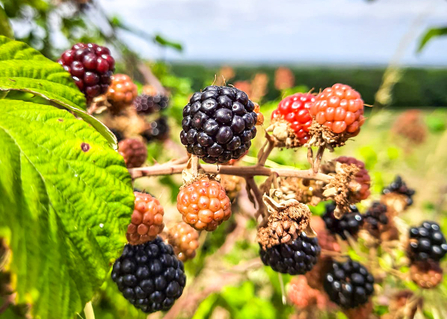
Blackberries on a bramble bush. Picture: Pete Hughes
In the past few weeks the hedgerows at our reserves have exploded with blackberries, rowan berries, rose-hips, elderberries and sloes. These fruits are devoured by birds, mammals and insects, which is why it's so beneficial when farmers are able to leave hedgerows to grow. If you love foraging, come along to our bramble-basket making course at Sutton Courtenay on Saturday, 16 September.
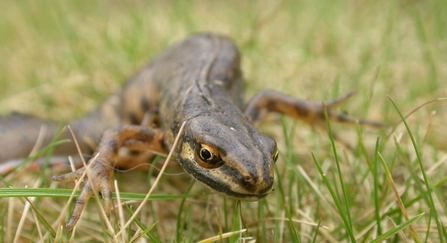
Smooth newt © Philip Precey
Having mated in ponds across our region in the spring, newts are now making epic journeys through undergrowth to find safe places to hide over winter. If you're able to leave a wild area in your garden it can provide a perfect hiding place – find more tips on our actions page - bbowt.org.uk/actions.
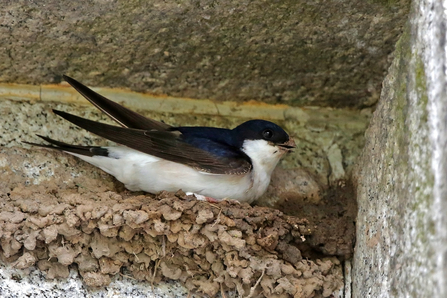
A nesting house martin. Picture: Margaret Holland
House martins are incredible birds: measuring just 12cm long, they fly as much as 6,000 miles every year. Despite their strengths, they are a threatened species on the UK birds of conservation concern red list. At this time of year, many are still raising their broods in the eaves of houses and barns, but their epic migration south can happen any time between now and the end of October. If you want to learn more about brilliant birds, come to our migrant bird walk at our Nature Discovery Centre in Thatcham on Wednesday, 13 September.
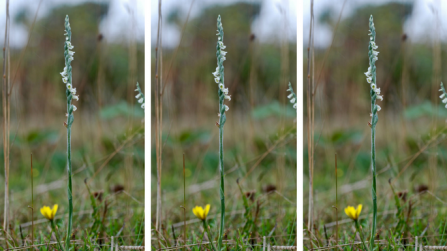
From late summer to the end of September, when conditions are right, you may see thousands of autumn lady’s-tresses in the grassland at Greenham Common. This delicate plant is a late summer-flowering orchid with tiny white, bell-shaped flowers arranged in a single spiral around the stem. We are having a special orchid walk at Greenham to see this spectacle on Sunday, 10 September - please join us!
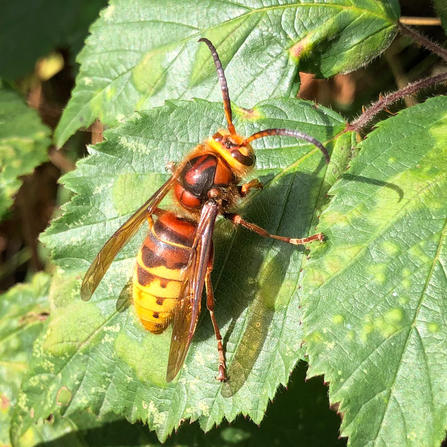
Hornet at Snelsmore Common. Picture: Lou Reeve
With their golden and crimson livery, hornets are beautiful insects. They also have painful stings and can defend themselves if threatened but, like most animals, they are more scared of humans than we are of them. September is often the best time of year to see them when colonies are at their peak - look out in woodlands as workers scavenge near their nests in hollow trees.
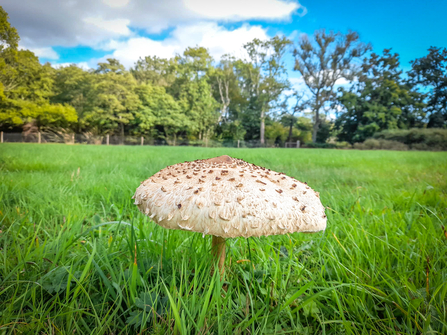
A parasol mushroom (Macrolepiota procera) at BBOWT's Moor Copse nature reserve. Picture: Tom Hayward
One of our favourite highlights of autumn is the emergence of fungi fruiting bodies - mushrooms and toadstools. In the past few weeks we have seen pink russulas, red-and-white fly agaric and a highly poisonous death cap at our Snelsmore Common reserve. If you love fungi, come and join our fungi walk at Windsor Great Park on Friday, 6 October.
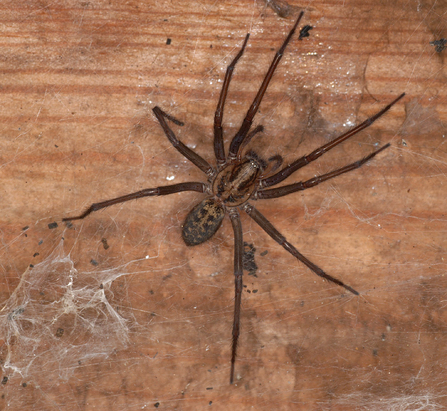
The giant house spider (Tegenaria duellica). Picture: Malcolm Storey
As summer turns into autumn, male spiders in the Tegenaria genus across the UK leave their webs to go in search of females. Six species in the genus are commonly found in our homes, ranging from the relatively small Tegenaria domestica to Tegenaria parietina which can have a 12cm leg-span. Join us at our Woolley Firs environment centre in Maidenhead on 16 September for a day of spider-themed activities.
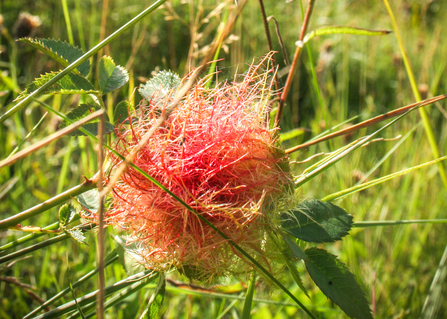
A bedeguar gall at BBOWT's Gallows Bridge Farm nature reserve, also known as a robin's pincushion, made by the gall wasp Diplolepis rosae. Picture: Pete Hughes
Take a walk around any of our reserves this month and you might spot balls of spiky pink tentacles erupting out of a hedgerow: robin’s pincushion galls. These alien growth are created when tiny gall wasps inject their eggs into wild roses, creating an impenetrable nest where the larvae can grow safely.
Find out more about the weird and wonderful world of gall wasps.
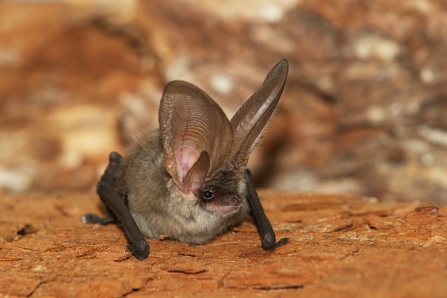
© Rudo Jureček CC BY-NC-SA 2.0 https://creativecommons.org/licenses/by-nc-sa/2.0/
Did you know we have 18 different species of bat in the UK? September is a great time to see them and we have three guided bat walks this month where we'll use special detectors to eavesdrop on their ultrasonic calls - Windsor Great Park on Wednesday, 6 September; Woolley Firs on Tuesday the 12th and Sutton Courtenay on Friday the 22nd. Join us for a night you won't forget!
Sign up below to receive the latest news from BBOWT, tips about how you can help wildlife, plus information on how you can get involved.